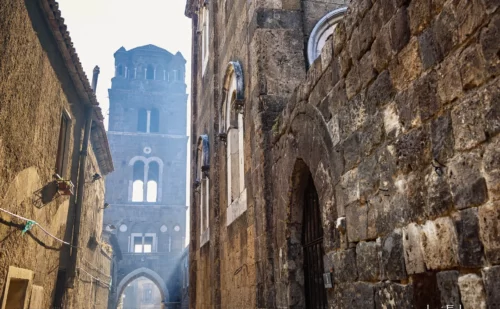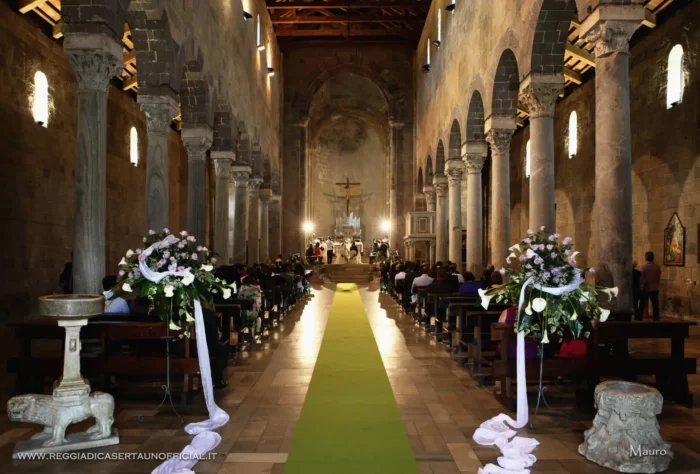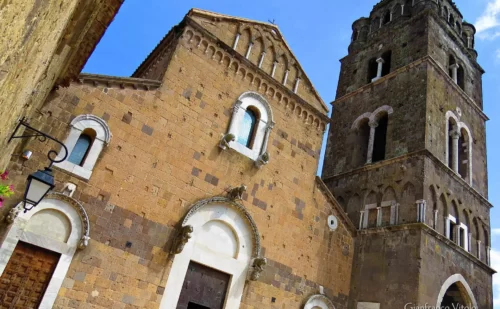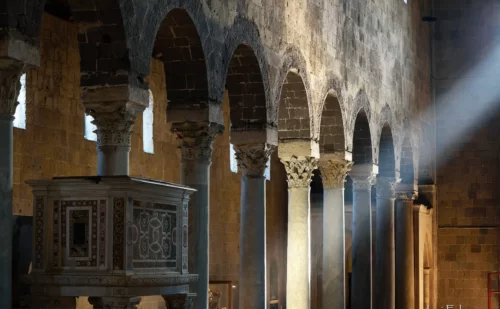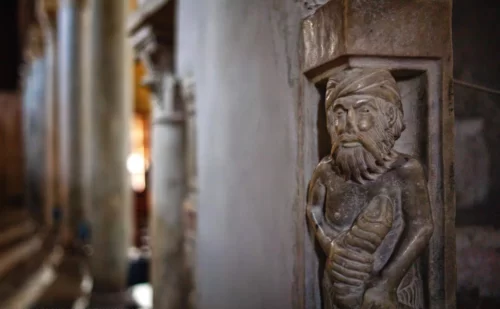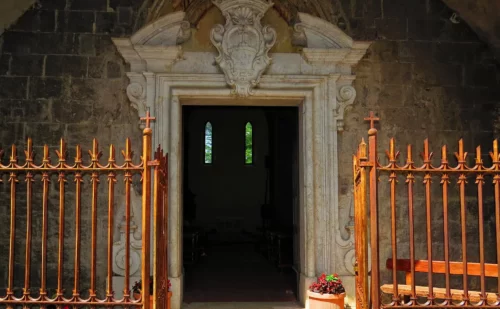Casertavecchia
Return to the Middle Ages by visiting Casertavecchia, the ancient city of Caserta
A short distance from the Royal Palace, on the southern slope of Mount Virgo, stands the medieval village of Casertavecchia. Of Lombard foundation, dating back to the eighth century, it preserves its beauties intact: visiting the square with the suggestive bell tower, the Cathedral in Sicilian-Norman style, the castle and the breathtaking panoramic points, one really gets the impression that time has stopped, and that walking along the pretty streets you can come across one of the good luck sprites so famous among those who live in those places.
History
Of Lombard foundation, dating back to the eighth century, it owes its original name of Casa Hirta to its position perched on the hills. The village was subject to the principality of Capua and Aversa, and later became a bishopric. Casertavecchia, a place where time seems to have stopped, and which with its alleys and squares is ready to offer us memorable glimpses. This medieval village rises like a nest of towers, arches, mullioned windows and chimneys, perched on a hill in the Tifatini mountains, full of history and ancient legends such as that of the “sprites”, and the beneficial fairies of the surrounding mountains. As a reminder of its splendid past, there are the Cathedral and the bell tower in Sicilian-Norman style, the remains of the Lombard castle and the streets of the entire village.
The medieval village
With its alleys and squares, it offers memorable glimpses such as the chapel of the Addolorata, enriched by fragments of frescoes and traces of arabesques from the 1600s, in front of which we find the facade of Casa Pisano, with a loggia portal and mullioned window, further on. Casa Ferraiuolo with its mullioned windows and 12th century portal and Casa Uzzi with the ancient courtyard and loggia. The village retains its ancient historical aspect, as well as offering exceptional panoramic points over the entire plain of Caserta and the Royal Palace, with Vesuvius on the horizon.
The Cathedral
Dominating Piazza Vescovado is the facade of the cathedral dedicated to San Michele, the main building and heart of the village. The church was founded in the early twelfth century by bishop Rainulf and, after further work commissioned by his successor Nicholas, was completed in 1153, as reported on the architrave of the main portal. Its Sicilian-Norman style, contaminated by the Apulian Romanesque (which has among its best examples the cathedrals of Bitonto and Trani) and by the Benedictine one of Cassinese derivation, constitutes one of the finest examples of this architecture, together with the cathedrals of Amalfi, Gaeta and Monreale.
The Church of the Annunciation
Gothic church from the end of the 13th century, with a facade surmounted by a rose window and a bell tower enriched by single lancet windows and a spire dome.
In the actual village, along the picturesque Via Annunziata, an eighteenth-century portico opens on the right, embellished with a marble portal bearing a noble coat of arms. The portico precedes the Gothic church of the Annunziata (late 13th century), with a sober facade with three windows and, at the top, a rose. The interior is simple but evocative, with a single nave with large windows. The bell tower, with three orders with single lancet windows, is surmounted by a spire dome.
A little further on, a large ogival stone arch with a beautiful coffered vault passes under the bell tower of the Cathedral. Crossing it you can see the inscription that recalls four visits by Pope Benedict XIII (two in 1725 and two in 1729). You then exit onto the delightful and intimate square Vescovado, rectangular, overlooked by ancient houses with beautiful tuff portals, the Cathedral and the former seminary.
The castle
The building was probably built in the 9th century, immediately after the foundation of the village. Of the original towers, the cylindrical keep, 30 m high, remains. Inside, exhibitions, shows and historical re-enactments are often organized.
From the castle you have an overall view of the town, among whose roofs the bell towers of the Annunziata and the Duomo stand out, and the splendid dome of the latter.
External links







